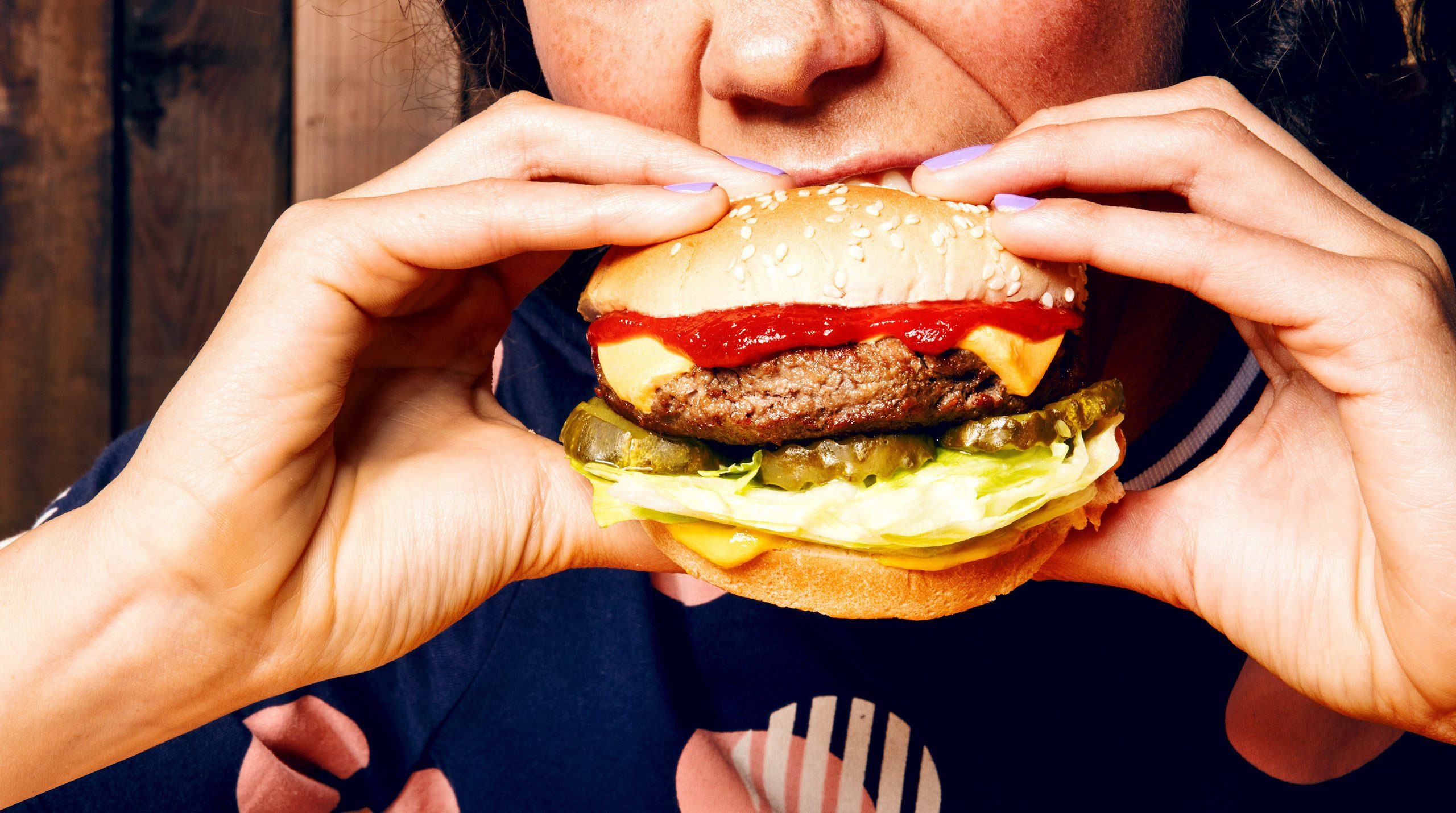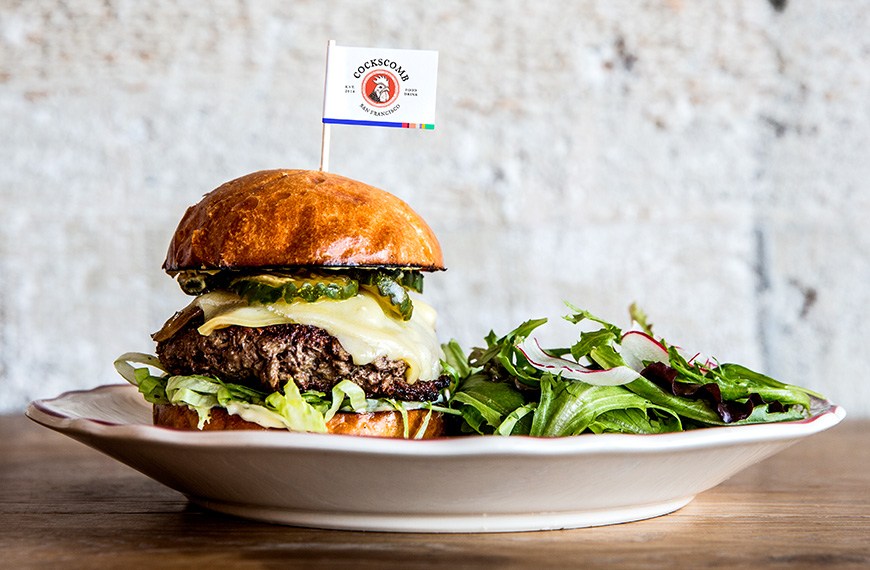Can top chefs play a big role in reducing global warming?
Pioneer chefs across the country are starting to embrace the new food revolution: a plant based burger that tastes, smells and feels like the real thing. Converts include traditional “meat only chefs” such as Chef Chris Cosentino, winner of ‘Top Chef Masters’ and a pioneer in butchery, who now includes this burger as his top recommendation in his San Francisco restaurant.
A new question sparks out of this phenomenon: if adopted by mainstream population, could these burgers reduce global warming?

Hidden costs in our habits
Our current food system places heavy pressures in our planet. FAO states that total emissions from global livestock represent 14.5 percent of all anthropogenic GHG emissions. The largest impact can be traced to our love for beef. Cattle are the animal species responsible for the most emissions, representing about 65 percent of the livestock sector’s emissions (1).
By changing our diet we can make significant changes in our carbon footprint. A study in the UK shows that an average 2,000 kcal high meat diet had 2.5 times as many GHG emissions than an average 2,000 kcal vegan diet (2). In addition to this, studies show that changing our dietary structure toward a more plant-based one would have both environmental and health benefits (3).
The problem is diet is a big part of our culture and it’s naive to expect most people to change their eating habits to reduce their impact in global warming. This is why we need to find better alternatives to meat that have a lower footprint in our planet.
Looking for the right alternative – Company background
“Impossible Foods” is a Silicon Valley startup on a mission to make the global food system more sustainable. The company aims to give people the taste and nutritional benefits of meat without the negative health and environmental impacts of livestock products. The twist is that their owners hope to target meat eaters as their primary customers. So far, they’ve received 108MM in funding from VC’s such as Gates Ventures and Google Ventures (4).
Their innovation process starts with research of animal products at the molecular level and then selection of specific proteins and nutrients from plants to recreate the experience of meats and dairy products from animals (5).
The secret behind the creation of their latest invention: the impossible burger, is the addition of plant based hemoprotein (Leghemoglobin), a main contributor in the characteristic color and taste of meat. Their process for producing ground meat replica has been patented (6) and they intend to keep investigating in additional meat substitutes.
Not only is the taste and texture amazing, but producing the Impossible Burger requires a quarter of the water used to produce the same burger from a cow, 1/20th of the land and 1/8th of the greenhouse gas emissions (7).

However, there are threats to be accounted for. As mentioned before, meat has been a big part of our culture. Not only it serves a dietary purpose, but has also played a big role in social gatherings. During the last 50 years, average world meat consumption has risen from 24.2 to 41.3 kg/year(8). Vegetable based products could take a longer time than expected to be accepted by the general market. Additionally, even though there isn’t any specific FDA requirement regulating meat alternatives as of today (9), it’s most likely that this will be the case in the future and the company should account for this risk. The biggest risk I find is the response from the industry of traditional livestock. This is a multi-billion dollar business that can lobby against meat substitutes, which would have legal implications for the company and could extend time to market new products.
Success in the business will depend on their ability to keep growing their product and having a clear vision of the role meat substitutes will play in the global economy. Only time will tell.
Word Count: 647
Sources:
(1) http://www.fao.org/news/story/en/item/197623/icode/
(2) Scarborough, P., Appleby, P. N., Mizdrak, A., Briggs, A. D., M., Travis, R. C., . . . Key, T. J. (2014). Dietary greenhouse gas emissions of meat-eaters, fish-eaters, vegetarians and vegans in the UK. Climatic Change, 125(2), 179-192. http://dx.doi.org.ezp-prod1.hul.harvard.edu/10.1007/s10584-014-1169-1
(3) Mózner, Z. V., & Csutora, M. (2013). Designing lifestyle-specific food policies based on nutritional requirements and ecological footprints. Sustainability : Science, Practice, & Policy, 9(2) Retrieved from http://search.proquest.com.ezp-prod1.hul.harvard.edu/docview/1460228017?accountid=11311
(4) https://www.capitaliq.com/CIQDotNet/BusinessRel/investors.aspx?companyId=274591496
(5) (7) www.impossiblefoods.com/
(6) https://www.google.com/patents/WO2015153666A1?cl=en
(8) http://www.fao.org/docrep/005/y4252e/y4252e05b.htm
(9) “Imitation or substitute products belong to the same product categories as the products they imitate or for which they substitute” – http://www.fda.gov/ICECI/Inspections/InspectionGuides/ucm114704.htm



Beyond Meat also does something similar. It blows my mind to hear that they can replicate the look, taste, and the smell! I’ve also watched videos about consumers who had the food, and they say they cannot tell the difference. I would love to see how this plays out once the news spreads. Also, I had only thought about the taste and price, but it’s really interesting that you bring up the legal factors, and I also see a bit of the political play that might take place among the traditional meat providers.
Great post. What an interesting product. I think the threats you mentioned are spot-on. As I think about implementation and expansion of this, the one thing that comes to mind right away is the complication of the channel. Not only do you have to convince consumers to eat the product but there are so many other players here – supermarkets, fine dining restaurants, quick-service restaurants. Each one of them thinks very differently so I think there’s a big challenge there. It would be amazing though if one day, McDonalds’ Big Macs could contain the Impossible Burger! I wonder if there may be an opportunity for partnership there, rather than competition. Why can’t McDonalds, as part of their CSR strategy, partner with these guys and help them with global distribution? If this is where the consumer is going, the quick service restaurants will need to react accordingly.
Great post!
Thanks for posting JB. I wouldn’t have thought that slight changes in a consumer’s diet could have significant effects on GHG emissions. As I was reading your post, I started thinking about where the Impossible food team was making sacrifices and if it can recreate the same protein and nutrient balance that one would see in traditional meat. I went to their website and was pretty discouraged by the nutritional facts (http://www.impossiblefoods.com/faq/). Although they can deliver bioavailable protein and vitamins such as iron, the amount of saturated fat is appalling, 54% of your recommended daily value from a 3 oz serving. I probably eat roughly 8 oz of protein per meal which would mean I would be receiving over 100% of my daily saturated fat content in one meal from the Impossible Burger. They may be able to recreate a plant based burger, but they are light-years away from helping the US reduce obesity!!
Wow, so interesting JB! This product shows such promise to revolutionize the livestock and food industries. I share Anthony’s concerns about the nutritional value of the Impossible Burger. (Also, I read that the burger “bleeds” because it has a component of hemoglobin, which gives me the heebie-jeebies). Another risk affecting the adoption of this product – and the ability to drive partnerships with McDonalds and others, like some have suggested – is the price point. More than just growing a bunch of lentils and beans and calling it a veggie burger, Impossible Foods is extracting hemoglobin from soy, inputting it into yeast, and employing all sorts of innovative tricks to simulate the real deal. I imagine scaling this up will be a challenging and expensive endeavor. But, this is just the start, and I am sure that Impossible Foods and its emerging competitors have much scope for innovation to address the health and price concerns.
As a former vegetarian, I really appreciate this post. If only, Impossible Foods was around then, I may not have had to revert back!
I agree with you that the traditional meat industry may push back on these changes. For example, we know that billions of dollars subsidize the corn industry. Any ideas for how we could prevent lobbyists from doing the same in this industry?
What else can Impossible Foods be doing to improve their sustainability practices? I would assume they audit their own facilities to be energy efficient, improve transportation to reduce carbon footprint, etc, but I suspect there is something more they can be doing.
Great post! It’s interesting that there is now technology to process plant based proteins to be so similar in taste and substance to real meat. What do you think is the biggest challenge for Impossible Foods? How can they position their product to be the most successful and gain the most sales from meat eaters? With so many competitors entering this market, what should meat eaters be looking for when shopping for substitutes?
Interesting post JB! I find it fascinating that there can be such a close substitute for meat. I share concern with AC’s post – there are many economies in the world that are very heavily reliant on livestock. How can we present this opportunity in a way that gets buy-in from these industries rather than strong opposition?